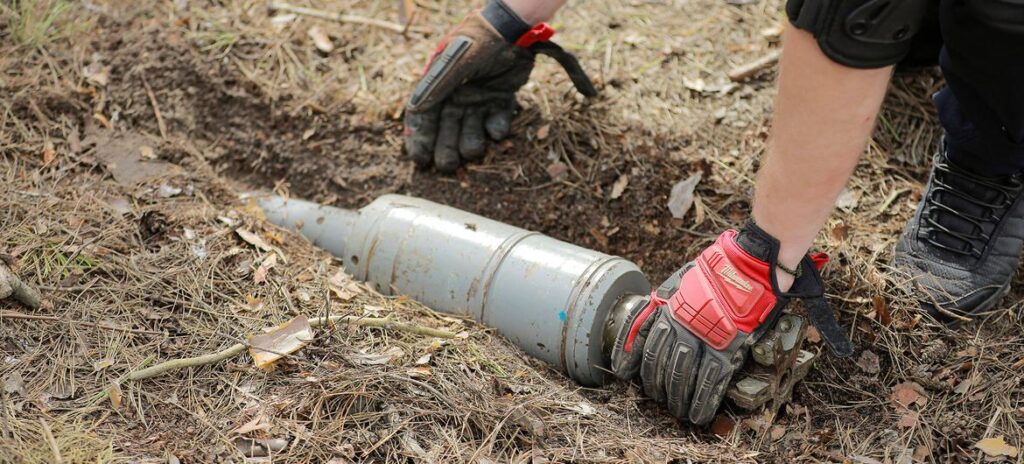
“It’s a double win when demining – which is always a good thing – is linked to sustainable agriculture and energy security, even when conflict is ongoing,” said Chris Loughran and Camille Wallen.
Since the large-scale Russian invasion of Ukraine in February 2022, the country has become one of the most heavily mined areas in the world. an estimated one 25 percent of the country contaminated with mines – an area four times the size of Switzerland.
The report, titled Improving the financing of mine action in Ukraineis exploring new financing solutions aimed at advancing Ukraine’s national mine action strategy to solve the massive demining problem the country faces.
On the instructions of UNDP at the request of the Ukrainian Ministry of Economic Affairs, specific models are described that can be reasonably applied for possible application.
Everything before that was ‘dress rehearsal’
Since the First and Second World Wars, the Ukrainian government has been managing the risks associated with unexploded ordnance, but the current large-scale war is a whole new level of complexity, according to UNDP.
Typical, 30 to 50 percent of unexploded ordnance does not explodebut the rest remain active, with any physical impact potentially causing an explosion, Alexander Lobov, a mine action expert at UNDP, said in an interview with UN News last year.
This makes the scale of the invasion of Ukraine particularly dangerous and demanding front line of more than a thousand kilometers said Paul Heslop, Chief Technical Advisor to the UNDP Mine Action Program in Ukraine.
In another interview Speaking to UN News earlier this year, Mr Heslop, who has spent three decades clearing mines in hotspots ranging from Mozambique to Afghanistan, described all these experiences as a “dress rehearsal” for Ukraine – his current and most challenging mission yet.
Two key solutions
According to the UNDP report, there are two main solutions to the demining problem in Ukraine.
The first, known as a Sustainability-Linked Bond (SLB), aims to synergize mine action efforts with Ukraine’s transition to sustainable agriculture, particularly through organic winter wheat production and ‘no till’ farming practices.
Meanwhile, the Results-Based Public-Private Partnership (OB-PPP) would integrate demining with solar energy development.
By leveraging private sector involvement, the proposed SLB and OB-PPP models aim to address Ukraine’s strategic needs in the areas of mine action, energy and agriculture, while promoting economic recovery.
Long-term commitment
“UNDP is committed to promoting innovative solutions that meet immediate needs while advancing Ukraine’s long-term sustainability goals,” said Jaco Cilliers, UNDP Resident Representative in Ukraine.
“By aligning mine action with sustainable agricultural practices and renewable energy, we can help drive economic recovery and resilience in Ukraine”, he added.
As Ukraine navigates the complexities of recovery and development, these innovative financing approaches represent an important step toward a more secure and sustainable future.

